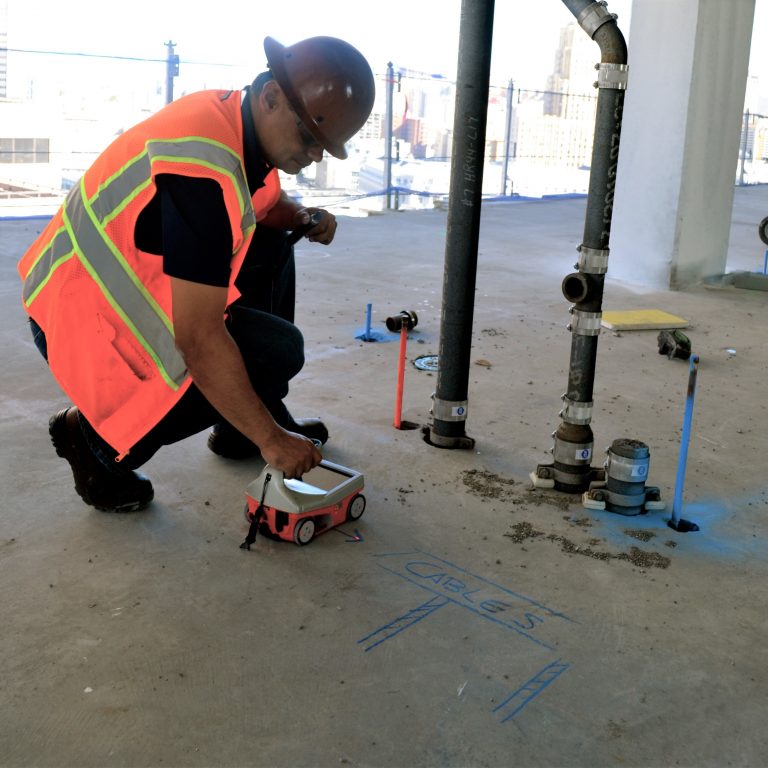Precision and Accuracy in Concrete Scanning Solutions
Precision and Accuracy in Concrete Scanning Solutions
Blog Article
Beyond the Surface Area: Leveraging Advanced Concrete Scanning Techniques for Unmatched Precision and Understanding
Advanced concrete scanning techniques have actually arised as vital tools in this pursuit, offering a look underneath the surface area to unveil a world of essential understandings. By using innovative innovations, professionals can discover anomalies, analyze the condition of concrete frameworks, and make informed choices that form the program of jobs.
Significance of Advanced Concrete Scanning
The importance of utilizing innovative concrete scanning strategies depends on the unmatched accuracy they provide for identifying sub-surface anomalies and making sure architectural stability. By using advanced technologies such as ground-penetrating radar (GPR), electro-magnetic induction, and progressed finder imaging, building and construction experts can delve beneath the surface of concrete frameworks with a level of precision that much exceeds standard evaluation techniques. Concrete Scanning. These strategies allow the recognition of concealed hazards like rebar deterioration, voids, avenues, or post-tension cords that could jeopardize the security and safety and security of a structure gradually
Furthermore, advanced concrete scanning supplies important insights into the general condition of a concrete element without the requirement for invasive measures, minimizing the danger of creating damage throughout the evaluation procedure. The ability to determine the precise place and deepness of prospective problems allows for targeted repair services and maintenance, eventually extending the life expectancy of the structure and maximizing its performance. Fundamentally, the value of sophisticated concrete scanning can not be overemphasized in the realm of construction and facilities upkeep, where accuracy and integrity are extremely important.
Sorts Of Cutting-Edge Technologies

Abnormalities and Defect Detection

In addition to GPR, concrete scanning methods like thermography and impact-echo testing are additionally reliable in discovering defects and anomalies. By leveraging these advanced strategies, specialists can proactively attend to structural issues, making certain the longevity and safety of concrete structures.
Assessing Concrete Problem
Exactly how can engineers accurately evaluate the condition of concrete frameworks to ensure their longevity and safety and security? Assessing the concrete problem is a critical facet of preserving infrastructure honesty. Various innovative concrete scanning methods are utilized for this function. Ground-penetrating radar (GPR) is commonly used to evaluate the inner framework of concrete, discovering gaps, cracks, and other anomalies that may endanger its toughness. Furthermore, impact-echo screening can offer understandings right into the density and stability of concrete components. Ultrasonic pulse rate testing is an additional useful approach for assessing concrete high quality by determining the speed of acoustic waves through the material.
Furthermore, aesthetic assessment stays a basic part of concrete condition evaluation. Designers visually examine the surface area for indicators of wear and tear, such as spalling, splitting, or staining. Incorporating non-destructive over at this website screening approaches with aesthetic examinations permits an extensive assessment of concrete problem, enabling engineers to determine prospective concerns early and execute prompt maintenance or repair services. By leveraging these advanced techniques, designers can guarantee the lasting resilience and safety of concrete frameworks.
Enhancing Decision-Making Processes
In the world of infrastructure management, optimizing decision-making processes is crucial for ensuring the reliable maintenance and long life of concrete frameworks. Enhanced decision-making processes in concrete management involve making use of sophisticated scanning methods to gather comprehensive information on the condition of structures. By leveraging innovations such as ground-penetrating radar and 3D imaging, stakeholders can make enlightened choices regarding reinforcement, repair work, or substitute methods.
These progressed scanning strategies give important understandings right into the interior make-up of concrete, determining potential issues such as spaces, splits, or corrosion that may not show up externally. This degree of detailed information enables positive upkeep preparation, minimizing the threat of structural failures and enhancing the total life-span visit the website of concrete frameworks.
Moreover, by integrating digital paperwork and evaluation tools into the decision-making procedure, stakeholders can track the evolution of concrete problems with time, making it possible for anticipating upkeep methods and optimizing source allotment. Ultimately, the assimilation of advanced concrete scanning techniques improves decision-making procedures by supplying unmatched accuracy, understanding, and performance in facilities monitoring.
Verdict
In final thought, progressed concrete scanning strategies supply exceptional precision and understanding in detecting abnormalities, flaws, and assessing the condition of concrete structures. By leveraging advanced innovations, decision-making procedures can be boosted, bring about even more effective and informed solutions for preserving and fixing concrete facilities. These strategies play a vital function in ensuring the safety and security and long life of concrete frameworks, making them an important device in the area of construction and engineering.
Additionally, advanced concrete scanning provides important understandings into the general condition of a concrete aspect without the need for intrusive procedures, lessening the danger of creating damage throughout the analysis process - Concrete Scanning. Another innovative modern technology is 3D X-ray scanning, which offers comprehensive images of the internal structure of concrete, providing important details without the demand for harmful screening. Additionally, Concrete Cover Meters are used to determine the thickness of concrete cover over reinforcement bars properly. Improved decision-making processes in concrete management include making use of innovative scanning techniques to collect thorough data on the problem of this hyperlink structures.In final thought, advanced concrete scanning techniques use exceptional accuracy and understanding in discovering abnormalities, issues, and analyzing the problem of concrete frameworks
Report this page